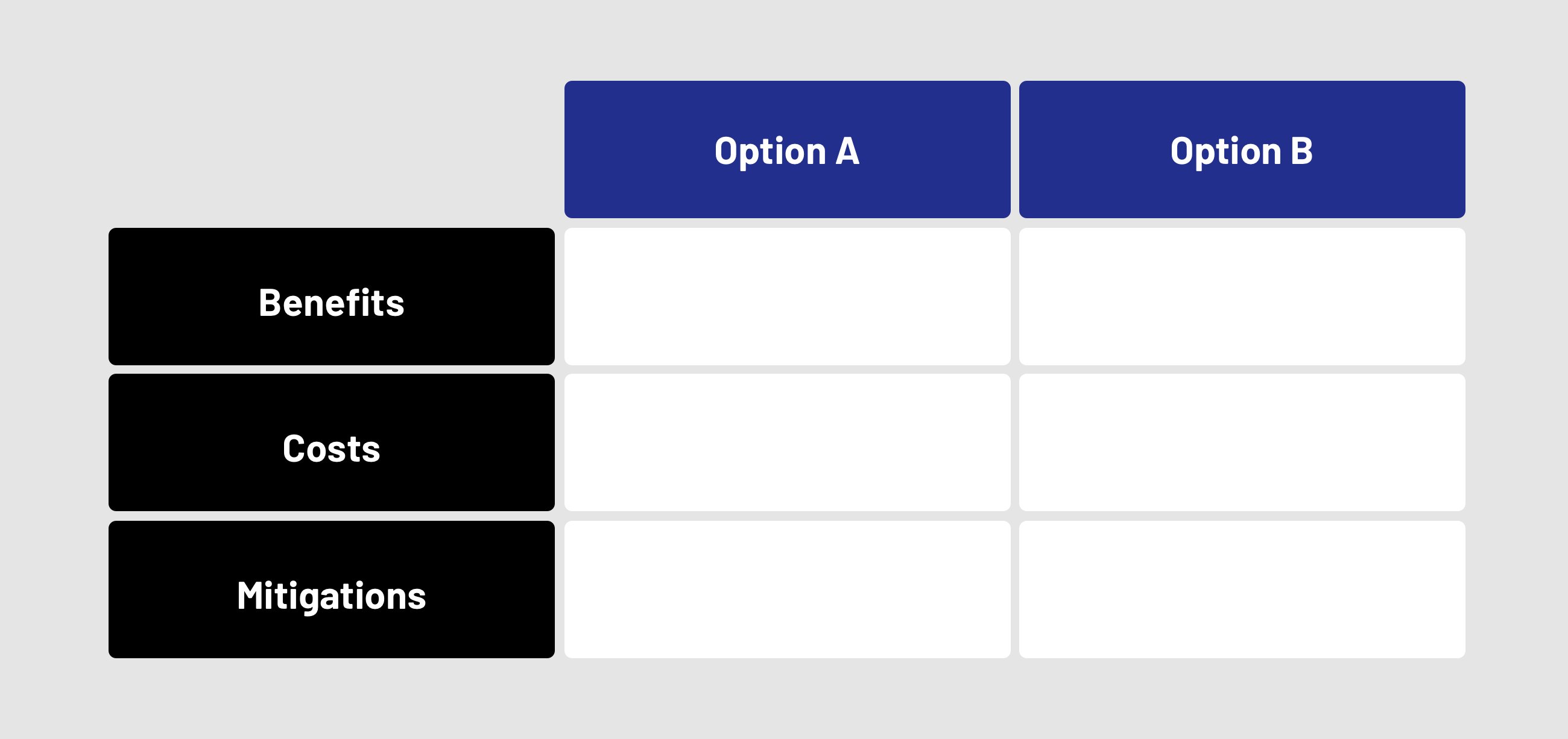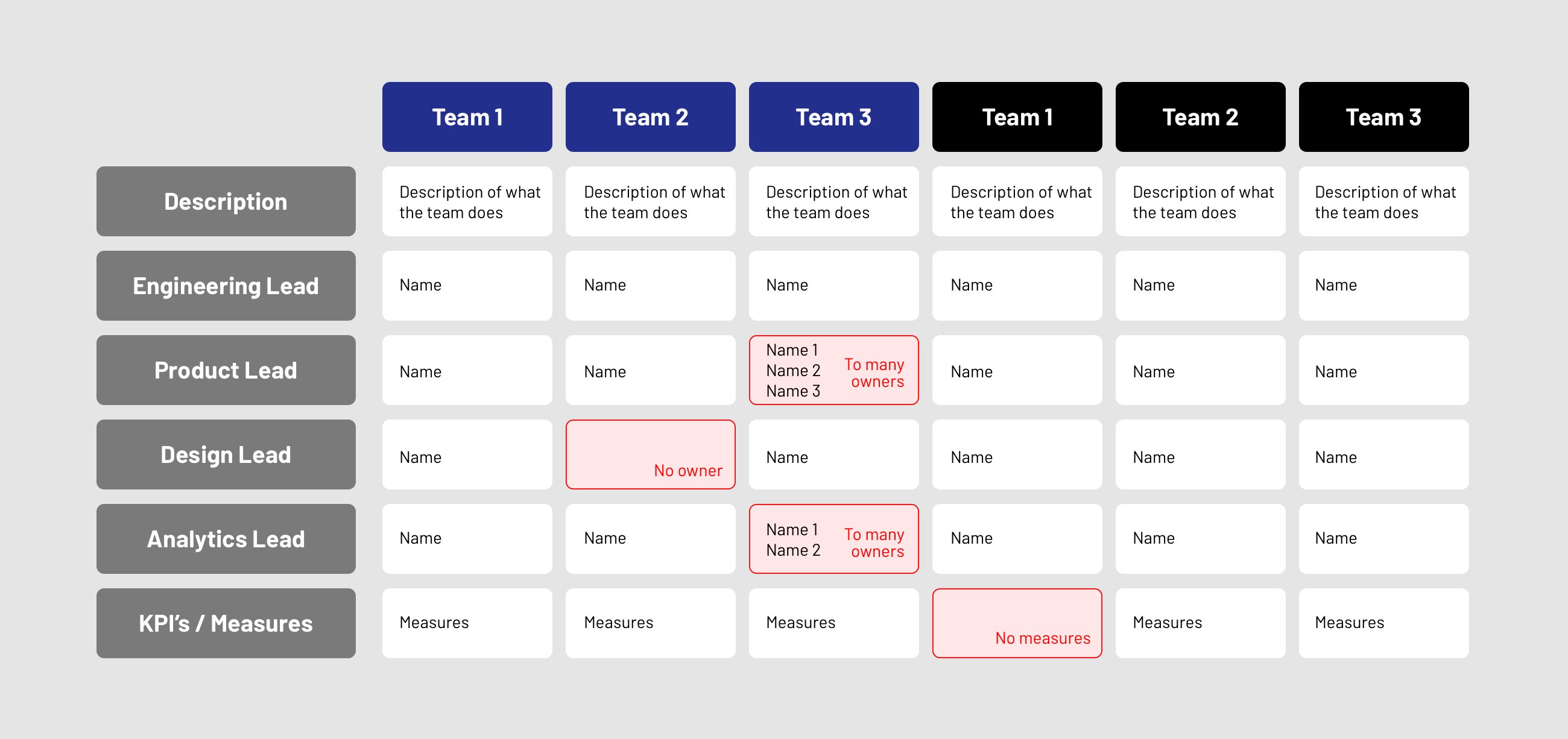Sometimes we find ourselves forced to make a decision under uncertain circumstances. To be honest, that’s most times. Especially when working at a startup, chances are you will face decisions like this quite often. But decision-making doesn’t have to ba that hard. If you think of it as a process you will be able to make much better decisions in the long term. Here’s the best decision-making frameworks you can use:
Define What A “Good Decision” Is
This sounds much simpler than it actually is. Making decisions under pressure and with limited information can cause a bad decision to look like the right thing to do. But if you come up with a set of guidelines for decision-making then you will avoid confusion each time you make a decision. Having a specific decision-making criteria is also the best way to ensure everyone’s decisions within the company actually align with the company’s short and long-term goals. The more people work at your business, the more you will have to outsource the decision-making. If you want to ensure that the choices made by your employees are the right ones according to the company’s policy – come up with a set of specific guidelines.
This can be a number of different things. Most businesses already have a set of values and principles but they rarely enforce them to be used as decision-making guidelines. So, if you can, share the long and short-term vision with your employees and ensure they keep that in mind when making a decision. This way, you won’t be so reliant on people to make the right choice. Instead, you can trust their decision-making process. What is also important to note is that there’s a difference between a good decision and a good decision-making process. You can make bad decisions that will not cause big commotion inside your company, but you can also make great decisions that do cause chaos. Sometimes it takes people some time to process the decision and realize that it was the right choice after all.
“Xanax For Decision-Making”
There’s a decision-making framework that we like to call a “Xanax for decision-making”. It’s a rather simple matrix that helps you to put your options (or choices) in perspective. Basically, you will analyze all your options in three areas: benefits, costs and mitigations. What makes this specific framework unique is the “mitigations” section. We usually only focus on the things like costs and benefits which, while important, often don’t provide a complete overview of a decision’s impact.
That’s why, this matrix, besides costs and benefits also includes the mitigations. With this one you should focus on the way this option impacts your company and your company’s environment. Will it make people work with more enthusiasm? And will it make your boss happy? Is it going to open up new opportunities for some people within the company? All those things impact the way a decision is perceived. It’s also good to list out those empathy-driven aspects of a certain decision, because it will reduce the amount of stress you experience while making decisions.
That’s why this matrix is called a “Xanax”. It helps you make good decisions without being stressed out. This matrix is also one of the decision frameworks that is nice to fill out with a team – this way you will all come up with more perspectives and make a better overall choice. Another nice thing about this specific framework, is that you can add sections to it. Besides the three listed above, you can also include others like risks or legal concerns. Whatever is the most important to your business – work it into the framework.
Subscribe for exclusive access
A/B Test Ideas Within Your Business
Sometimes there’s a lot of different people within a single company, and each one of them will have different ideas and concepts that they want to implement. You will be forced to make decisions that impact those people and their engagement. And that’s when you can use A/B testing as your decision-making process. It might seem like it will take much more time and work. And the truth is – it actually might.
But taking two ideas, testing them against each other and making a decision based on the collected data is the best way to not only make a good decision but also to ensure that the people involved still feel validated and motivated to come up with concepts. There’s nothing worse than someone making definitive decisions based on their personal bias or personal framework. It can really dishearten your employees and might lower their quality of work. Making a decision using A/B testing is an objective way to choose the best option. There’s plenty of tools that will make your A/B testing quick and easy – check out our guide on how to do A/B testing successfully.
Define Who Is RACI Before Each Decision Or Project
RACI stands for Responsible, Accountable, Consulted and Informed. By identifying who fits into each of those categories before you make a decision you will eliminate some of the decision fatigue. People responsible are the ones who will work on implementing the decision. The ones accountable are their managers who will take on making project-related decisions later on. And those who need to be consulted are the ones that need to be included in the decision-making process and get a say on the final choice. And lastly, there’s the informed group. This includes everyone that needs to know about the decision when it’s made.
Making the distinction between these groups is very important because it will help you see all of the stakeholders involved and realize their actual impact on the decision. Someone in the company might turn out to have a much bigger say in the decision while someone else just needs to be informed about the final choice. Using a RACI model is extremely useful in bigger companies but that’s not to say it shouldn’t be used in small startups. The sooner you take action and make RACI a part of your process, the less work it will take to implement in the future. If you make it a part of your company’s culture from the very beginning, you will have much less trouble making decisions when your business grows bigger.
Use Your RAM
What is RAM? Besides being a random-access memory, it’s also one of the frameworks that will help you make the right decisions. In this context, RAM stands for a Responsibility Assignment Matrix. It looks a little like the “Xanax” one we discussed previously but a little more complex. While this specific matrix will not help you directly in making decisions, it will help you make your process more organized and ensure you get better results. It also saves a lot of time by avoiding unnecessary conflict or repeating information. Take a look at an example RAM matrix below:
As you can see at the top, we defined larger groups of teams (in our case the teams are usually involved in one project). Then we have those groups broken down into individual teams. On the left you can input different decision-related areas like Design Lead or Development Lead. Then you should input the names of the team members responsible for the decisions in this category. This will help you see any areas that need improvement.
Sometimes there will be just one person assigned – and that’s good. You should have just one decision-maker in each category. You might also realize that in some cases there’s more than one person involved. That’s something you need to get sorted out. The more people are involved in the process, the more disagreements and delays you might get. It might also turn out that there’s not a single person assigned to a certain category. That’s also very important to take care of. Take the time to assign people responsible for decisions in each team. It will save you a lot of time in the future and you will always know who is responsible for certain decisions within the company.
Understand The Decision You’re Making
This may sound confusing, but it’s extremely important to understand the decision you’re about to make. We’re very used to thinking about decisions as just a choice to make. But you should understand that there’s more to each decision you come to. There’s two basic types of decisions – reversible and irreversible ones. You should know into which category your specific decision falls into. Keep in mind that there’s very few decisions that actually can’t be undone. One way or another, there’s usually a way to “take it back”. Decisions that are actually irreversible should get more of your attention. Here’s where you can take your time and process the choices you have.
But most decisions can really be made in less than 10 minutes. Some managers tend to spend too much time on going over their options and get frustrated and stressed because of that. It’s a great thing to give yourself or your team deadlines to make decisions. For example, “we have to decide by the end of the day”. Or “we need to decide by the time this meeting’s over”. If you need some outside pressure, you can ask someone else to keep you accountable. But remember that you shouldn’t rush decisions either. Make sure to get every perspective you need. And ensure that you heard all the important voices before you make a decision.
Use The SPADE Framework To Come To A Decision
Here’s another great model that you can use to come to a decision. You can use it to explain your decision in great detail and present your stance on a certain choice. When it comes to big projects or big companies, there’s often a need to justify your decision and prove to everyone that you’ve made the right choice. SPADE stands for Setting, People, Alternatives, Decide, Explain.
First there’s the setting. It’s about listing the context of the decision and defining what the decision actually is. Get your question as precise as you can – this will ensure you focus only on what matters. Then there’s the people’s section. You can use the RACI model to define who is responsible and accountable for what as well as who should be informed and consulted with prior to making a decision. Next we have alternatives. To come to the right choice you need a comprehensive overview of the alternatives. You should, without any bias, come up with feasible alternatives for the specific choice you’re making. You can either do this alone or use a brainstorming session with your team.
Now comes the most important part – deciding. Gather everyone involved in the room and present to them what you’ve prepared. Ask them for feedback and their point of view. Based on that you can come to a decision. And now, the last step – explaining why your decision is the right one. Include all the information you’ve listed previously, the setting, the alternatives etc. It’s a great tool to have for your stakeholders and clients but it’s also what will give you the feeling of security with the choice you’ve made.
If you’re looking for a team to aid you in building your product and help you make some of those hard choices – contact us for a free product consultation with one of our specialists!


